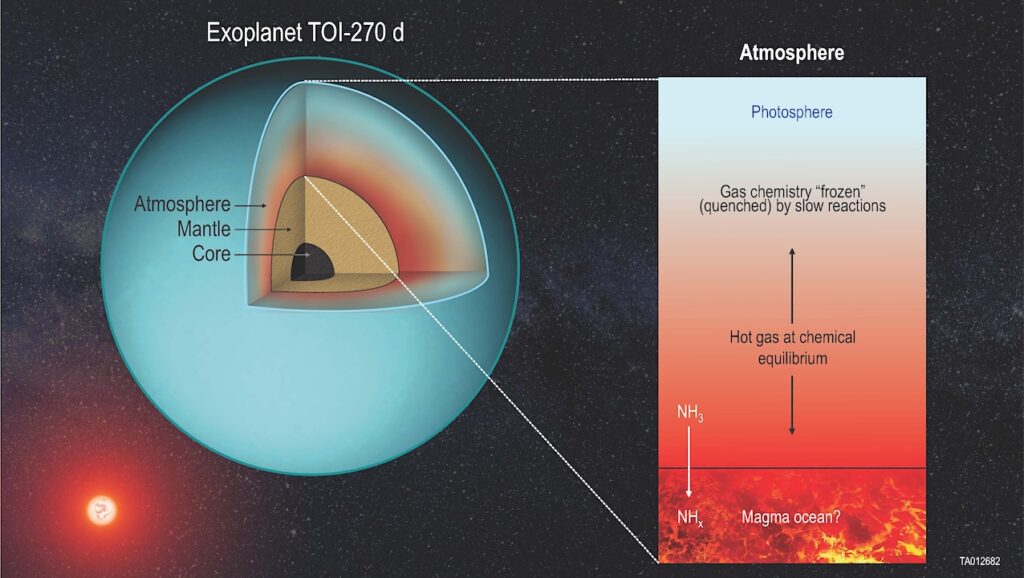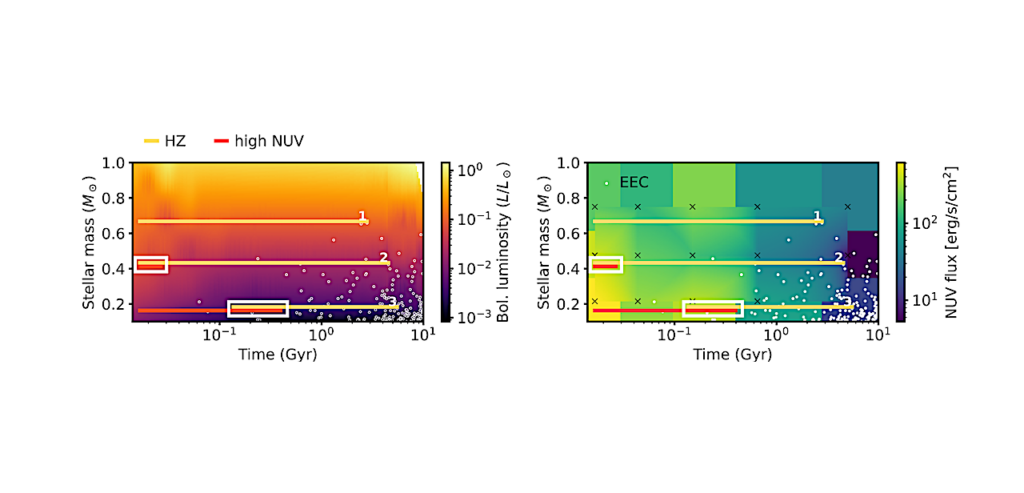Habitability of Exoplanet Waterworlds

We model the evolution of ocean temperature and chemistry for rocky exoplanets with 10-1000 times Earth’s H2O but without H2, taking into account C partitioning, high-pressure ice phases, and atmosphere-lithosphere exchange.
Within our model, for Sunlike stars, we find that: (1) habitability is strongly affected by ocean chemistry; (2) possible ocean pH spans a wide range; (3) exsolution-driven climate instabilities are possible; (4) surprisingly, many waterworlds stay habitable for $>$1 Gyr, and (contrary to previous claims) this longevity does not necessarily involve geochemical cycling.
We also find, using an ensemble of N-body simulations that include volatile loss during giant impacts, that a substantial fraction of habitable-zone rocky planets emerge after the giant impact era with deep, ice-free water envelopes. This outcome is sensitive to our assumptions of low initial abundances of $^{26}$Al and $^{60}$Fe in protoplanetary disks, plus H$_2$-free accretion. We use the output of the N-body simulations as input to our waterworld evolution code. Thus, for the first time in an an end-to-end calculation, we show that chance variation of initial conditions, with no need for geochemical cycling, can yield multi-Gyr habitability on waterworlds.
Edwin S. Kite, Eric B. Ford
(Submitted on 2 Jan 2018)
Comments: 23 pages, 18 figures, submitted
Subjects: Earth and Planetary Astrophysics (astro-ph.EP)
Cite as: arXiv:1801.00748 [astro-ph.EP] (or arXiv:1801.00748v1 [astro-ph.EP] for this version)
Submission history
From: Edwin Kite
[v1] Tue, 2 Jan 2018 17:51:00 GMT (7961kb,D)
https://arxiv.org/abs/1801.00748
Astrobiology








